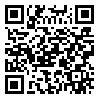Volume 8, Issue 3 (12-2020)
2020, 8(3): 61-74 |
Back to browse issues page
Download citation:
BibTeX | RIS | EndNote | Medlars | ProCite | Reference Manager | RefWorks
Send citation to:



BibTeX | RIS | EndNote | Medlars | ProCite | Reference Manager | RefWorks
Send citation to:
M H, A H, R A. The effect of high-intensity interval training and high-intensity resistance training on the Lipid profile and body composition in overweight and obese men. Journal title 2020; 8 (3) :61-74
URL: http://jms.thums.ac.ir/article-1-849-en.html
URL: http://jms.thums.ac.ir/article-1-849-en.html
1- Department of Exercise Physiology, Faculty of Sport Sciences, Hakim Sabsevari University. Sabsevar. Iran
Abstract: (4045 Views)
Background & Aim: Obesity is a metabolic disorder that can be controlled and prevented by
increasing calorie consumption and reducing calorie intake from food. This study aimed to investigate the effect of high-intensity interval training (HIIT) and high-intensity resistance training (HIRT) on lipid profile and body composition in overweight and obese men.
Methods: 30 overweight or obese men volunteers were equally randomized into three groups of HIIT (2.5-4 minutes of activity with 85-95% of maximum heart rate and 2.5-4 minutes of light walking), HIRT (3-6 sets with an intensity of 80-85% of 1RM, 6-8 repetitions and 30-60 seconds rest between each movement and 120 seconds rest between each set), and control. The training program lasted for 8 weeks (three sessions per week). Before and after the last training session, blood samples were taken from all subjects in a fasting state to measure serum levels of the lipid profile. Subjects were also measured for physiological variables (body fat percentage, muscle strength and body mass index (BMI) and aerobic power). Data were analyzed using analysis of variance with repeated measures at the significance level of P <0.05.
Results: weight, body fat percentage, TG and LDL serum levels were decreased significantly in HIIT and HIRT groups compared to the control group, and HDL levels and lower body muscle strength increased significantly. However, upper body muscle strength increased significantly only in HIRT group compared to the control group. The aerobic power and BMI indicators did not differ significantly between the three groups.
Conclusion: It seems that HIIT and HIRT can be used as an effective protocol in improving lipid profile, body composition and physical fitness in overweight and obese men. However, the effect of HIRT protocol is more potent than HIIT.
increasing calorie consumption and reducing calorie intake from food. This study aimed to investigate the effect of high-intensity interval training (HIIT) and high-intensity resistance training (HIRT) on lipid profile and body composition in overweight and obese men.
Methods: 30 overweight or obese men volunteers were equally randomized into three groups of HIIT (2.5-4 minutes of activity with 85-95% of maximum heart rate and 2.5-4 minutes of light walking), HIRT (3-6 sets with an intensity of 80-85% of 1RM, 6-8 repetitions and 30-60 seconds rest between each movement and 120 seconds rest between each set), and control. The training program lasted for 8 weeks (three sessions per week). Before and after the last training session, blood samples were taken from all subjects in a fasting state to measure serum levels of the lipid profile. Subjects were also measured for physiological variables (body fat percentage, muscle strength and body mass index (BMI) and aerobic power). Data were analyzed using analysis of variance with repeated measures at the significance level of P <0.05.
Results: weight, body fat percentage, TG and LDL serum levels were decreased significantly in HIIT and HIRT groups compared to the control group, and HDL levels and lower body muscle strength increased significantly. However, upper body muscle strength increased significantly only in HIRT group compared to the control group. The aerobic power and BMI indicators did not differ significantly between the three groups.
Conclusion: It seems that HIIT and HIRT can be used as an effective protocol in improving lipid profile, body composition and physical fitness in overweight and obese men. However, the effect of HIRT protocol is more potent than HIIT.
Keywords: interval training, resistance training, lipid profile, body composition, physical fitness, overweight/obesity
Type of Study: Research |
Subject:
Special
Received: 2020/10/25 | Accepted: 2021/01/1 | Published: 2021/01/3
Received: 2020/10/25 | Accepted: 2021/01/1 | Published: 2021/01/3
Send email to the article author
| Rights and permissions | |
 | This work is licensed under a Creative Commons Attribution-NonCommercial 4.0 International License. |






